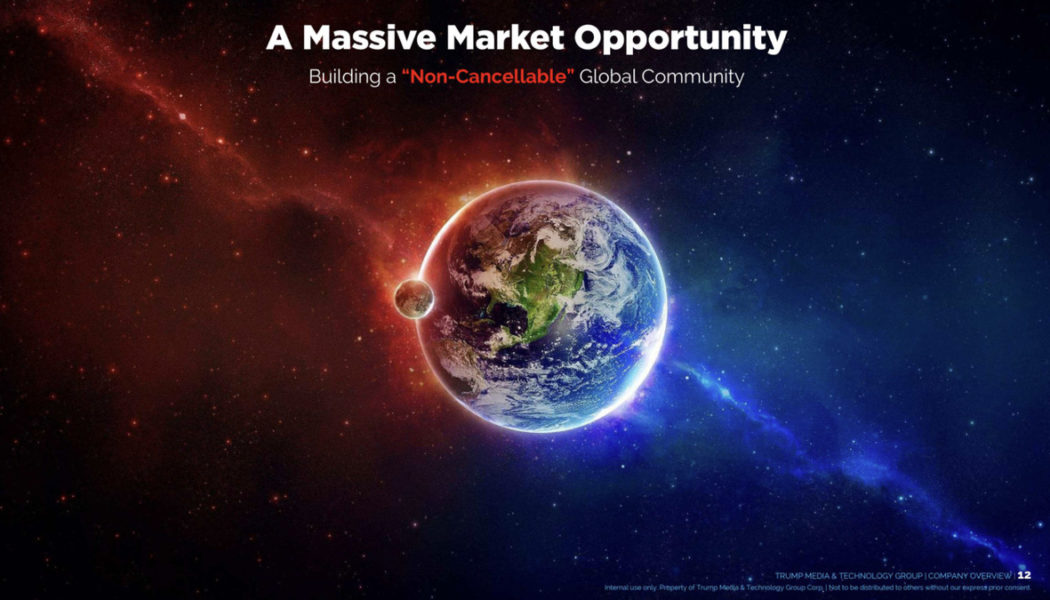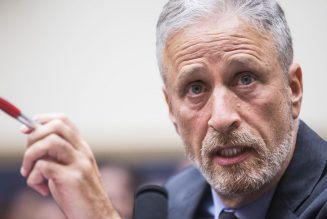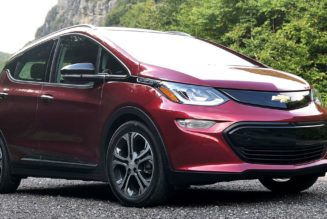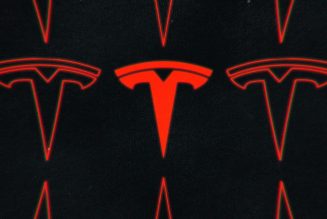In his latest attempt to return to the social media spotlight, Donald Trump is now turning to a current darling of the startup world: the special purpose acquisition company, or SPAC.
Trump announced Wednesday night that he has a new company called Trump Media & Technology Group (TMTG) and that he would be merging this new company with a SPAC called Digital World Acquisition Company (DWAC). If completed, the deal would turn Trump’s new media company into one that’s publicly traded on the Nasdaq. And it would give TMTG enough money to get a new Twitter clone off the ground called “Truth.”
The surprise deal is already turning DWAC into a meme stock, and it raises a fair number of questions.
Wait, what’s a SPAC?
Briefly, SPACs are shell companies that get listed on exchanges like the Nasdaq and exist for the sole purpose of eventually merging with companies that want to go public. Someone, often from the finance world, starts the company and gets a few other people to throw money in the pot in exchange for shares of the shell — typically sold at $10 a pop. They set themselves a deadline (usually around two years) by which they aim to find a company to merge with and tell the market which industry they’re targeting — though they can really merge with any willing business. Here’s a far more detailed explainer if you’re curious.
Trump has a new company?
Apparently! It was registered in Delaware in February but somehow went unnoticed until Wednesday night. Anyway, Trump has very big ambitions for TMTG, according to the truly ludicrous 22-page investor presentation that was published on its website.
:no_upscale()/cdn.vox-cdn.com/uploads/chorus_asset/file/22945054/Screen_Shot_2021_10_21_at_11.53.11_AM.png)
TMTG’s ambitions don’t end with Truth Social, Trump’s Twitter clone. Ultimately, TMTG aims to be a conglomerate with plans to — in all seriousness — operate a news network that competes with CNN, a streaming platform that competes with Disney+, and a technology services business that competes with Amazon Web Services.
So far, the only part of this that exists are bits of Truth Social, which appears to be a fork of decentralized social network Mastodon. The app already has issues. Some journalists have already created accounts on the app with usernames like “donaldtrump” and “mikepence.”
The promotional materials for Truth are full of fake messages from brands that didn’t give TMTG permission to be used. In one image, a “@ChevyTrucks” account has posted messages about a 2022 model year Chevy Tahoe; Chevy told The Verge that it was “unaware of this project.” “There is no 2022 Chevy Tahoe EV,” a General Motors spokesperson said in an email to The Verge.
Other messages include headlines from news outlets like The New York Times, TechCrunch and Variety. TechCrunch’s editor-in-chief, Matthew Panzarino, says he didn’t approve the headline. The New York Times didn’t respond to a request for comment. Variety didn’t have an on-the-record comment. If none of these brands were involved, it’s probably a safe bet that they aren’t getting back to us because they’re busy calling their lawyers.
I’ve approved some clunkers. Just not this one.
— Panzer (@panzer) October 21, 2021
Meanwhile, the Terms of Service for Truth Social include a rule that prohibits users from disparaging Truth on the platform — despite TMTG promoting Truth as a “big tent” where “all are welcome.” You are also not allowed to write posts with too many capital letters.
The investor presentation is also notable for what it’s missing: details on the money. Usually, these things at least glance at what kind of money the company seeking a merger has and what it projects future revenue might be. Usually, this is part of the motivation for SPACing in the first place: IPOs don’t let you project future revenue in quite the same way.
TMTG’s presentation doesn’t say a word about revenue, past or future.
Haven’t there been a bunch of right-wing Twitter clones?
There have! Gettr and Parler were both founded in the wake of the Trump bans, with older networks like Rumble seeing significant growth too. All three benefit from a new sense among conservatives that moderation on Facebook, Twitter, and YouTube are biased against them. In theory, that should create a huge potential audience for conservative-friendly alternatives.
In practice, the idea has run into a lot of problems that are likely to repeat themselves in Trump’s “Truth” project. The biggest challenge for any social network is scale: if there’s no one posting, then there’s nothing to read, which means fewer readers and less incentive to post. Outside splashy launches, most conservative-focused networks have struggled to maintain that scale — particularly Parler, where user growth slowed to a trickle over the summer. Right-wing platforms also struggled to set basic policies around hate speech and violent threats, caught between “free speech” branding and a lingering resistance to the nihilist chaos of spaces like 4chan.
But didn’t this specific thing already happen? I remember hearing Trump launched a social network.
He said that he was going to, but when it finally launched, it was just a blog for his press releases. We’re assuming this won’t just be another blog, but at this point, who knows.
Who runs the company Trump wants to merge with?
In the broadest sense, a bunch of money guys. It was started by a man named Peter Orlando, who has been an investment banker and ran a sugar trading company. The SPAC’s chief financial officer is Luis Orleans-Braganza — a serial entrepreneur who is also a current member of Brazil’s National Congress in Jair Boslonaro’s party and the son of the heir to Brazil’s defunct throne.
Orlando is involved in a few other SPACs, though he has yet to find a merger partner for any of them. Most recently, he has been trying to merge one with a hydrogen fuel company.
The existing directors (or nominees to be directors) who already own shares of the Digital World Acquisition Company SPAC have… let’s say, eclectic backgrounds. Lee Jacobson was an executive at Midway Games and Atari and also ran a mobile games analytics company that went bankrupt in 2019. Bruce Garelick is a hedge fund guy who describes himself as a “disruptive technology investing enthusiast” in DWAC’s SEC filings; he went to Wharton — Trump’s alma mater. Justin Shaner is a real estate investor and developer. Brian Shevland is a portfolio manager who also went to Wharton. Eric Swider has a history working in the resorts business. Rodrigo Veloso created a bottled water company that actually succeeded.
But it’s hard to say if they will stick around if a merger gets done. One of the problems with SPACs is that people who help create them are financially incentivized to walk away after the merger. The money is just too good for those who leave.
What is a PIPE, and why does it matter?
I apologize for another acronym.
SPAC mergers often involve a parallel funding round known as the “public investment in private equity,” or PIPE. This means that a company that’s merging gets the SPAC money plus some more money from outside investors. In return for that money, the outside investors get a chunk of the new company.
The outside investors are usually institutions like banks and pension funds. These investors often add legitimacy — even prestige — by having kicked the tires on the company. That can make other investors more comfortable with the SPAC.
Trump’s merger plan makes no mention of a PIPE. This is honestly very funny! Remember how we talked earlier about Trump’s ambitions to take on Disney, Amazon, and CNN? Okay. So the pile of money that he’s getting from the SPAC is about $300 million. That’s adorable. Netflix will spend $17 billion on content alone in fiscal 2021, and they don’t have to build a platform from scratch, which would be a significant expense.
Why would Trump do this?
Because he misses being on Twitter. If he is going to run for president again in 2024, he’ll need a social platform that isn’t just a shitty blog. And while right-wing social networks have failed as platforms, they’ve succeeded as a way of getting attention and dressing up general public indifference as a form of ominous censorship. Whatever happens with this new project, it will give Trump a great excuse to complain about Facebook at rallies. Maybe that’s the point?
I have to also imagine that there’s an element of financial gamesmanship here. Trump has exploited tax loopholes for decades. He’s pushed banks to grant him risky loans, and when those loans went bad, he’d go to extreme lengths to put them off — like when he sued Deutsche Bank and claimed he shouldn’t pay them back because they helped cause the Great Recession.
So, um, why would this work?
Well, remember meme stocks? Donald Trump had a whole meme presidency. Given the strength of his online fanbase and the general proliferation of “we like the stock” investing, it seems possible the plan is just to launch the company and have his true believers buy in. SPACs have been, at times, popular targets for the new class of casual retail traders. It’s not hard to imagine many people buying stock in this company simply for the lulz.
In fact, this may already be working! At the time this story was published, shares of the DWAC SPAC are already approaching the record for number of shares traded in one day. That extreme volatility has only lifted the stock price to $25, though, meaning we’re not seeing the same kind of coordination that propped up the valuation of, say, GameStop.
But there’s risk here, too. If those existing SPAC shareholders leave — as they are kind of financially incentivized to do — then regular people buying the stock could wind up owning shares of a company that’s less valuable than promised. CNBC recently determined that 97 percent of SPACs that have not yet completed a merger are trading below their initial $10 share price.
Of course, if this deal doesn’t work out, it wouldn’t be the first time that Trump has left other people — including his supporters — holding the bag.
With reporting by Mitchell Clark









